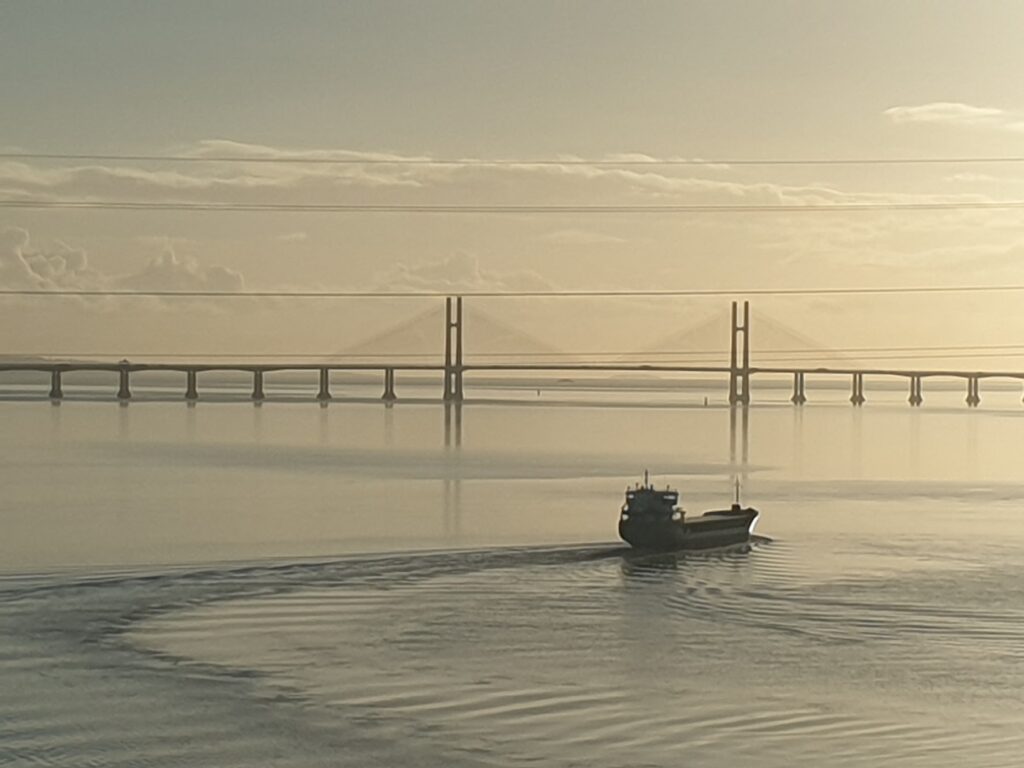
I’ve never been to Swansea before. I managed to make it through the first 55 years of my life without finding a compelling need. That makes it part of an elite club of British cities that until recently included Dundee and – just for the sake of clarity – NOT Brechin (although I had never been to that delightful Scottish town, either). So it was with genuine curiosity that I ventured out after an “all you can eat” buffet breakfast from the Dragon Hotel, in what felt like the city centre, and headed instinctively along early morning pedestrianised streets to the waterfront.
I obviously don’t have first hand experience of what Swansea was like before its extensive docks were given new life; but I am willing to bet it wasn’t anywhere near as good as it is today. You can’t beat a good waterfront, and you can see the redevelopment of former commercial docks and wharves in many a coastal British city, to great effect. I had already in this trip seen exciting things happening in places like Dundee, Newcastle, Liverpool and Hull, all much better places now than they were, reunited with the very thing that made them important in days gone by. We do quite a good job, I would suggest, of repurposing old and interesting buildings that deserve another chance. Room is usually also found for some more modern juxtaposition. Reviving our waterfronts has been a success story of British town planning and architecture in recent times and I find it both fascinating to be amongst and also hopeful and uplifting. And so it was, on a surprisingly grand scale, with Swansea.
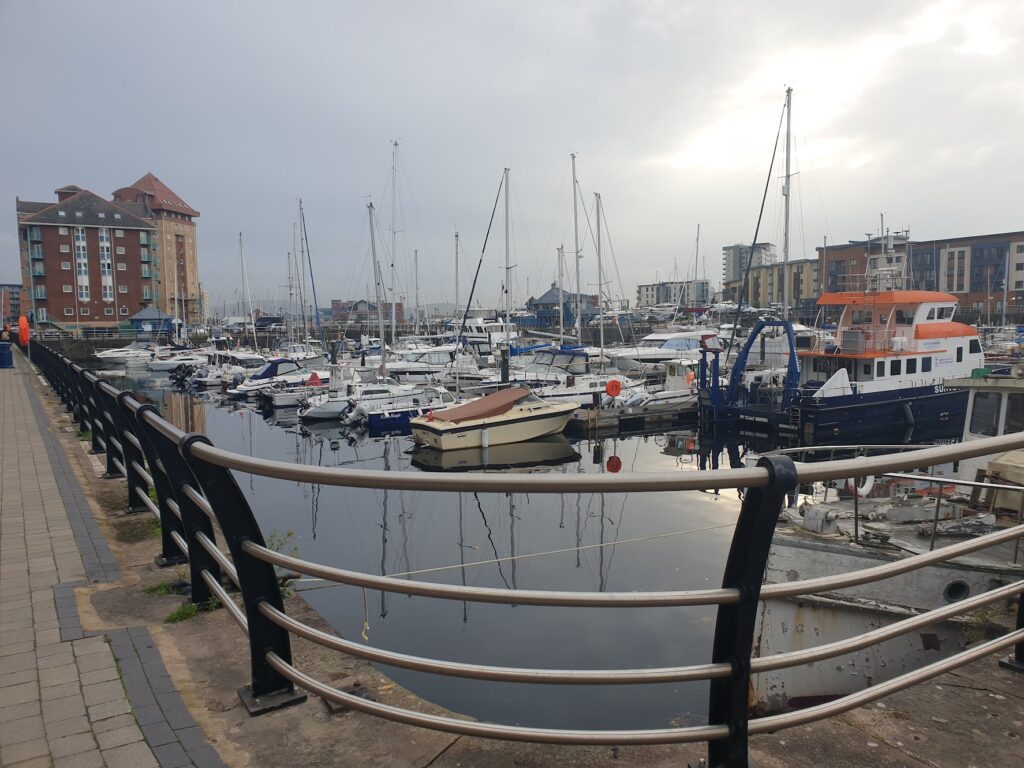
The docks must have been a busy place when Swansea was at the heart of coal and steel industries. I was unprepared for how large they were. Today, they are transformed into pleasant areas to live, exercise, meet, work, drink and dine. There was more than one large marina area of yachts and pleasure craft, which I think makes all the difference, because you can’t really have a waterside development without boats. In Swansea, they are also cycle friendly, with a landmark new pedestrian and cycle bridge forming part of national cycle route 4, that I would be following out of town. There is even the National Waterfront Museum here in Swansea. So they obviously know they are on to a good thing.
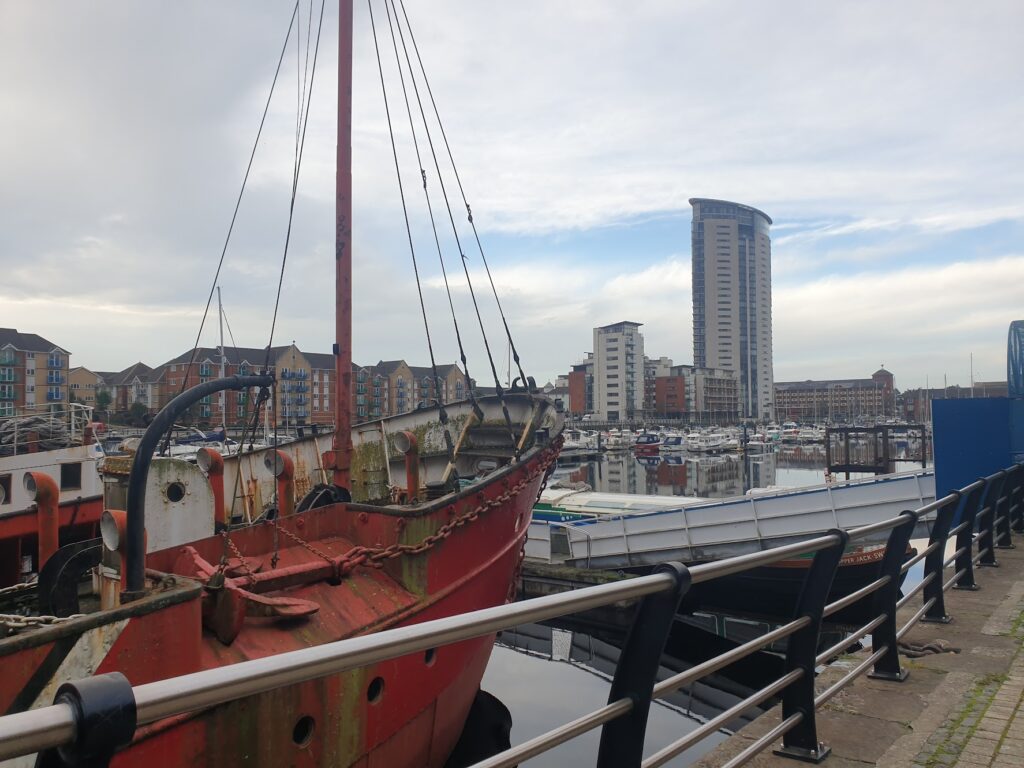
Technically, all of this fell outside the confines of OS map 170, the official start of my coast to coast; but in all practical senses, my journey began where the train ended the night before, in Swansea. As I rode away on the well made cycle paths that ran alongside the dual carriageway there came a point where I crossed an invisible line out of OS 159 and into my day proper. About 3 miles in, I believe; but I can’t say I noticed. By then I had left Swansea behind me and was focussed on getting as far as I could as fast I could. It was going to be a long day. I had already made the decision not to try and get to England along country lanes. The map told me that was unrealistic, perhaps even impossible, and I had made arrangements to stay with friends near Bath, a good couple of hours or more beyond the Severn Bridge, that would take me out of Wales for the last time. No, today would be about connecting together the three biggest cities in Wales – and then the bridge – in as efficient a way as I could find, and I was resigned to some riding along main roads if I needed to. Which, it turned out, I did. But in the event, it was not so bad. The principal route I followed was the A48. Before the days of the M4 motorway, that would have been a very busy road, and it was agreeably wide. But today it took me where I needed to be in as user friendly a way as a main road can.
It wasn’t the prettiest day of the trip, either. Port Talbot steelworks dominated proceedings in the first couple of hours. Then I stopped for coffee in Bridgend, which is not a holiday destination, either. I have certainly been to less attractive towns, and the cafe was lovely. But the pedestrianised town centre was a little tired looking, as if it didn’t really want to have to keep trying.

Next came Cardiff, which is noticeably larger and busier than anywhere that came before or after. There were about four miles of suburbs before I reached the city centre, and they were as challenging for cycling as anywhere else I went. Lots of traffic lights, junctions, lanes to get into, and indecisive or aggressive drivers. I don’t mind any that if I know where I am going, however, and the road I was on led straight to the city centre. Suddenly I was crossing the River Taff on bright blue segregated cycle lanes, with the Millennium Stadium to my right and, shortly after on my left, the imposing and richly decorated walls and towers of Cardiff Castle.
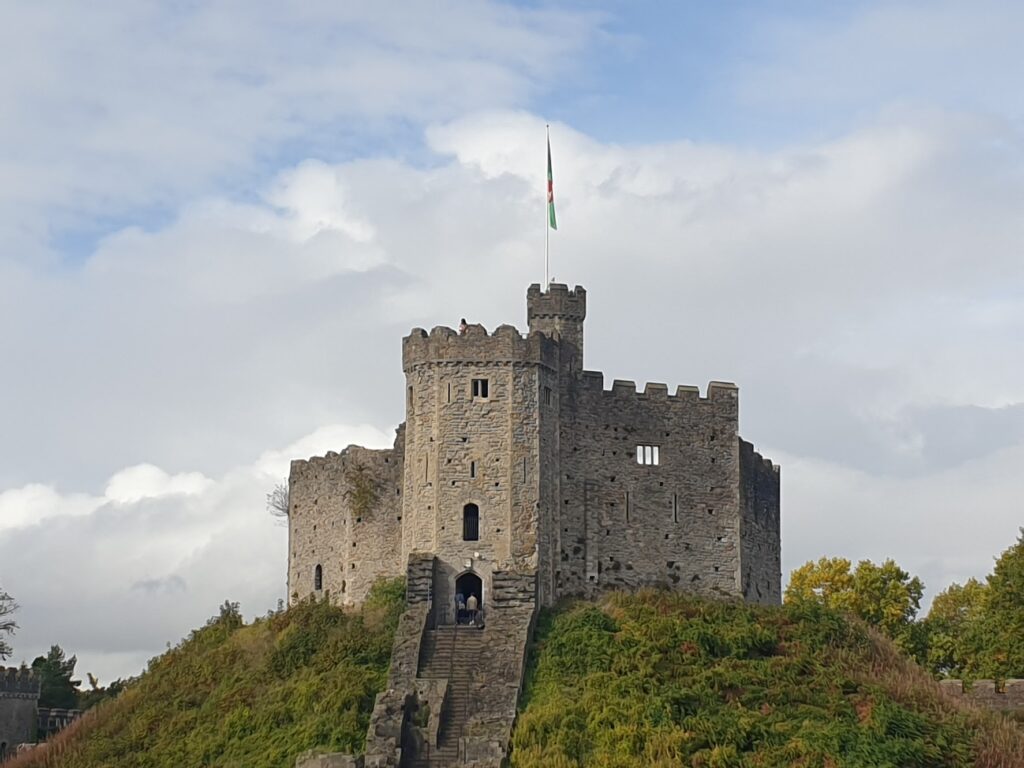
Part mediaeval fortress and part Victorian extravaganza, this edifice is a remarkable sight inside and out. You can pass through the main entrance gateway and into the enormous enclosed space, where there is a cafe with outdoor tables. It is a wonderful escape from the city outside the high walls, which shut out all the noise, leaving you to admire the ancient keep on its raised motte, surrounded by green lawns. And that was lunch, among Welsh speaking school parties: a well deserved break before riding on towards England, with the clock on the castle tower always ticking.
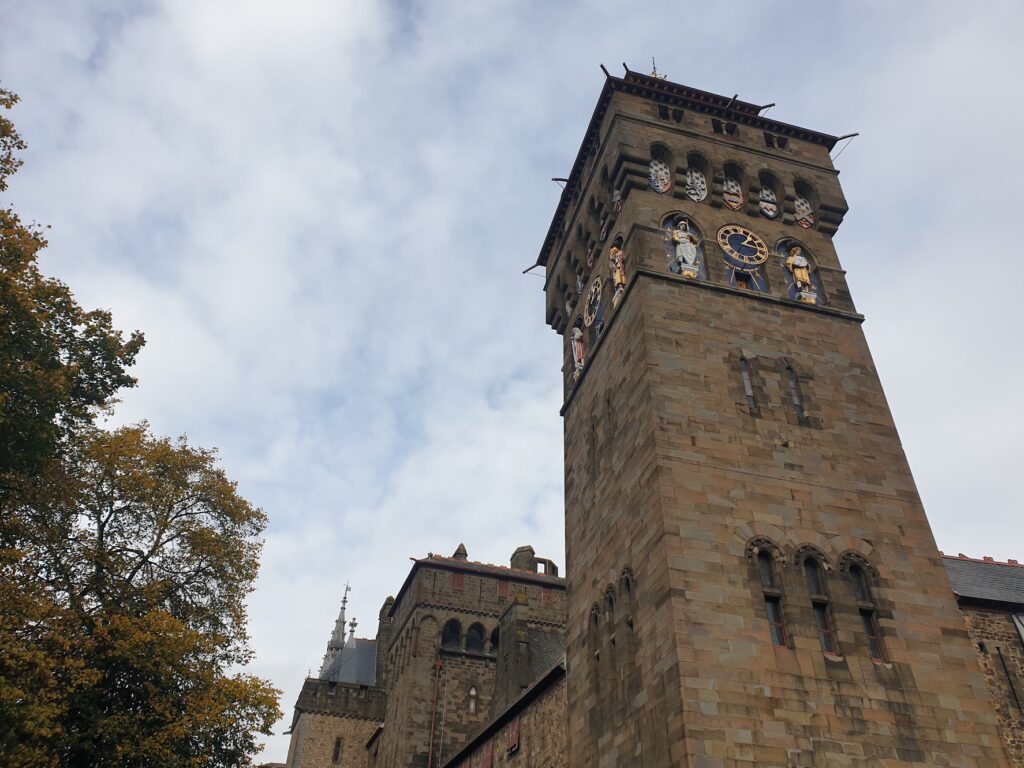
For the rest of the day, I chose B roads over A roads when I could to keep to a minimum the amount of traffic around me. The rather scrubby low lying country between Cardiff and Newport was quickly crossed and in less than an hour I was back in a city once more. Newport must struggle to maintain a strong separate identity, sitting as it does in the shadow of the nearby capital. It was a large port and is all about its river, the Usk, and the bridges that cross it. Notable among these is one of only two remaining operational transporter bridges in the UK (the other – the world’s longest – being in Middlesbrough). I have never crossed either and failed today to break my duck, because Newport’s transporter bridge will be undergoing restoration and building a new visitor centre until Spring 2023. At least that sounds optimistic. Middlesbrough’s isn’t working either at the moment with no immediate date set to reopen.
So instead I contented myself with crossing the rather splendid Newport City Footbridge, which forms the centrepiece of the city’s regeneration project ”Newport Unlimited” and provides a grand, if somewhat squeaky entrance on foot or by bicycle to the newer parts of the city centre. Its sturdy, angular masts, which support the bridge deck, were erected in 2006 using the largest crane in the UK. In 2010, a French circus star performed the highest ever wire walk in Europe along the bridge’s highest cable.
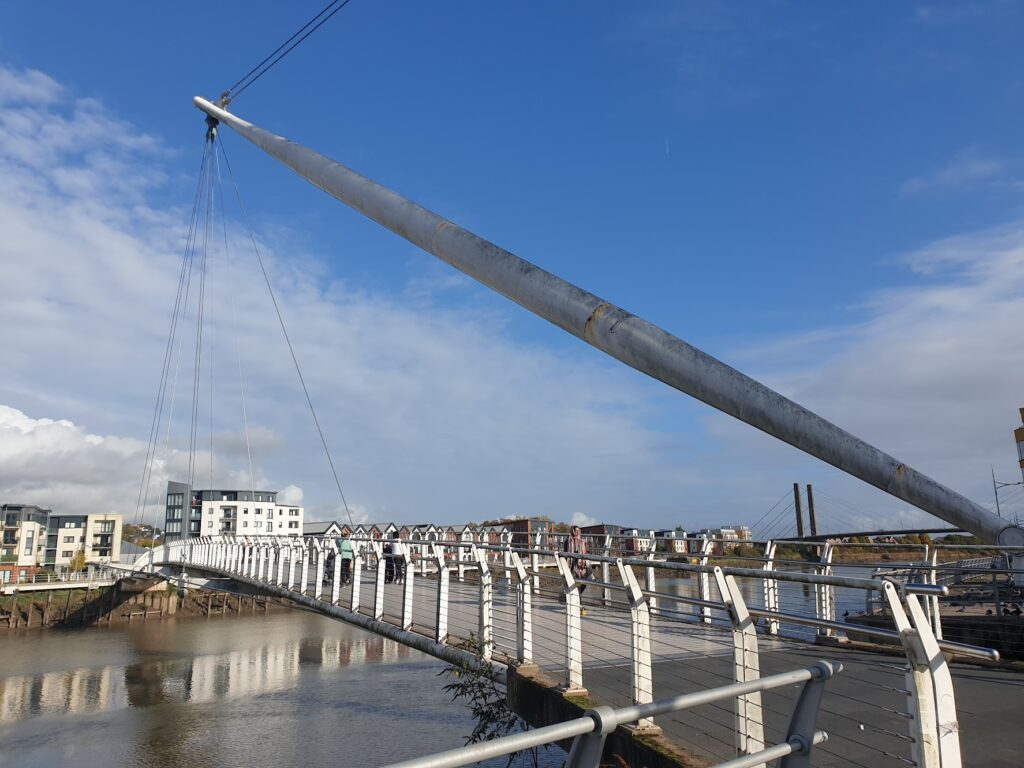
I left Newport by cycling past the entrance to Celtic Manor, where the Ryder Cup was played (and narrowly won by Europe) in 2010, and where the 2014 NATO Summit was hosted. I was late for both events, so I didn’t stop. Instead, I made for the Severn Suspension Bridge as fast as I could and arrived there in glorious weather. Bicycles and pedestrians can only cross the older of the two Severn motorway bridges, across the huge Severn Estuary fromWales into England. It took three and a half years to build and was opened in 1966, thirty years before the second bridge was opened just downstream. The Severn Estuary has the second greatest tidal reach in the world (after the Bay of Fundy in Atlantic Canada), and is home to one of Britain’s more remarkable natural phenomena, the Severn tidal bore. Today, as I crossed this huge and graceful wonder of engineering, the tide was in and the sun glistened off the water filled estuary. And then, thrillingly, a large boat sailed underneath the bridge, right at the time I was in the middle of it, and headed away towards the second bridge. I couldn’t have planned it any better.
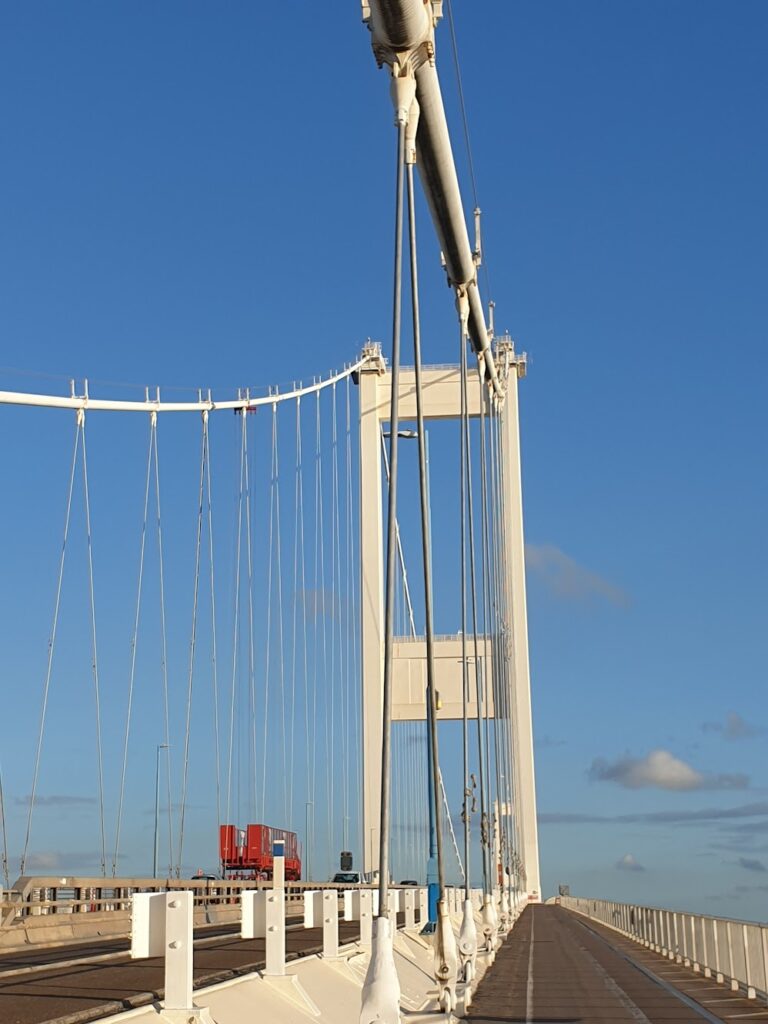
The final and attractive part of the ride was through Gloucestershire and Wiltshire, to reach the village of Box, just east of Bath. I took the most direct route I could find and cycled hard to beat off the impending sunset. I didn’t quite win. But after a day of 110 miles, I wasn’t surprised to find myself riding in the dark along tunnel like tiny lanes, my lights illuminating the high hedges as I descended off the downs and into Box, where warm hospitality awaited.
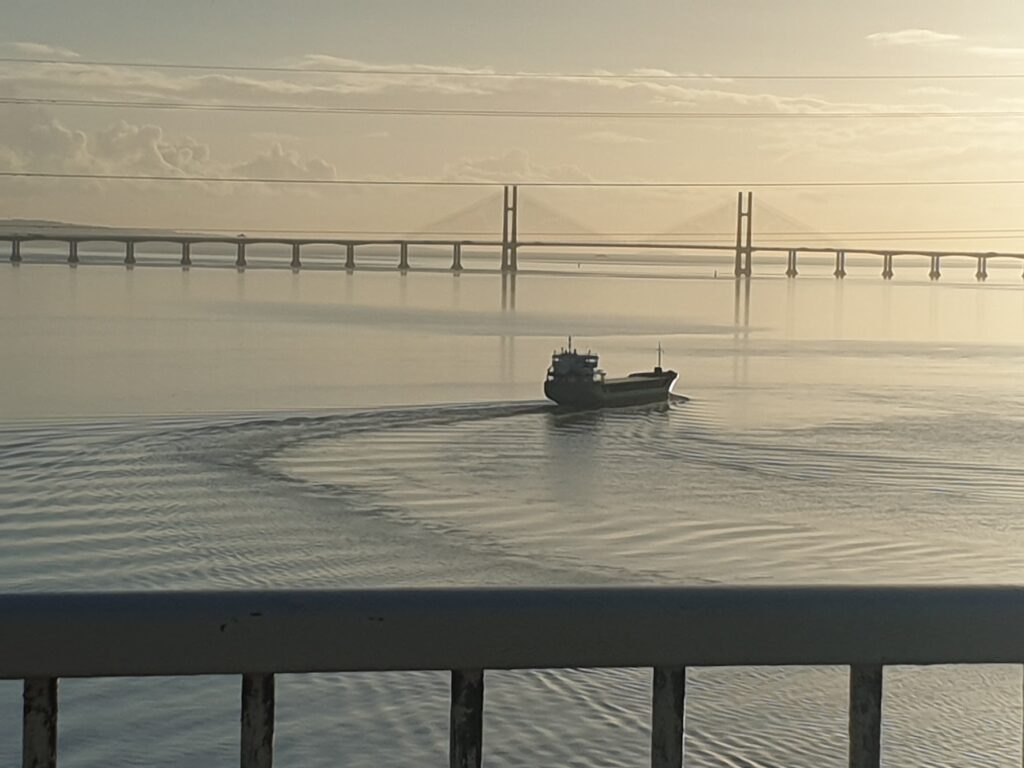
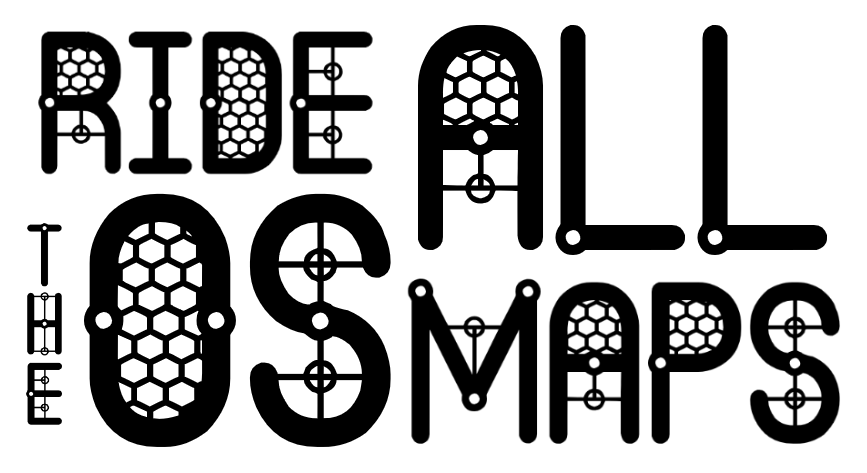
One reply on “Maps 170 to 172 – 3 miles east of Swansea to Box”
Wow – goodbye to Wales – well done, another tick.